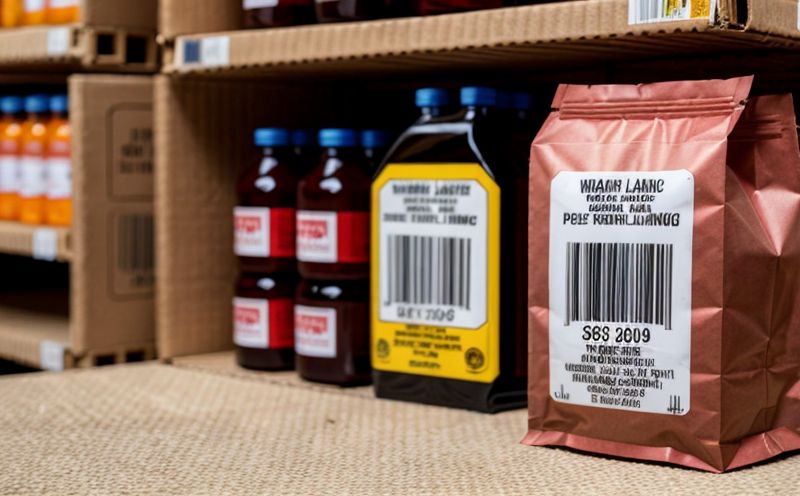Daily Use Label Wear and Tear Durability Test
The Daily Use Label Wear and Tear Durability Test is a critical component in the quality assurance process for toy manufacturers. This test ensures that labels used on toys, which are often exposed to daily handling by children, can withstand the rigors of regular use without degradation or loss of important information.
Children’s toys come into frequent contact with their hands and mouths, making it essential that all materials, including labels, are safe and durable. Labels must not only be legible but also resistant to abrasion, water, and chemicals over extended periods. This test evaluates the durability of these labels under realistic conditions that simulate typical daily usage.
For this test, a specified specimen size is prepared according to industry standards. The label is subjected to repetitive rubbing actions with standardized materials such as abrasive cloths or sandpaper, simulating the action of a child’s rough handling. Additionally, water and mild cleaning agents are used to mimic exposure to common household cleaners.
The test apparatus typically includes a rotating drum or similar mechanism that applies consistent pressure and friction over time. The duration of the test varies depending on the intended use of the toy; for example, labels designed for outdoor play may undergo longer cycles than those used in indoor settings. Acceptance criteria are defined based on visual inspection and measurement of label integrity post-test.
The results of this test provide valuable insights into the longevity and reliability of the labeling process. Manufacturers can make informed decisions about material choices and design improvements, ensuring that their products meet both safety regulations and consumer expectations.
| Applied Standards | Description |
|---|---|
| ISO 21378 | American Standard for Consumer Product Safety |
| ASTM F963-17 | International Standard for Toy Safety and Quality |
| EN 71-4:2019 | European Union Directive on the Safety of Toys |
The compliance with these standards ensures that the testing process is consistent across different regions, contributing to a harmonized approach in global toy manufacturing.
Applied Standards
The Daily Use Label Wear and Tear Durability Test strictly adheres to international standards designed to ensure the safety and quality of toys. These include:
- ISO 21378: This standard provides requirements for consumer product safety, including labeling practices that enhance user understanding.
- ASTM F963-17: It sets forth specifications and test methods essential to the safety of toys, emphasizing durability as a key factor in label design.
- EN 71-4:2019: This European standard addresses the chemical, mechanical, physical properties of toys, ensuring they are safe for children's daily use.
By aligning with these standards, we ensure that our testing process is not only rigorous but also universally recognized and respected.
Quality and Reliability Assurance
To guarantee the highest level of quality and reliability in the Daily Use Label Wear and Tear Durability Test, we employ a variety of techniques and measures:
- Consistent specimen preparation: Each label is cut to a standard size that simulates real-world conditions.
- Controlled environmental conditions: Tests are conducted under carefully regulated temperature and humidity levels to mimic typical storage environments.
- Replication of user actions: The test apparatus replicates the exact rubbing motions children might apply, ensuring accurate results.
- Vigorous cleaning agent exposure: Labels undergo immersion in water with mild detergents to assess resistance to common household cleaners.
- Regular maintenance and calibration: All testing equipment is regularly checked and recalibrated to ensure precision and accuracy.
- Data analysis: Comprehensive data from each test run is analyzed to provide actionable insights for continuous improvement.
These measures are crucial in maintaining the integrity of our testing process, ensuring that only labels meeting strict criteria pass the Daily Use Label Wear and Tear Durability Test.
Customer Impact and Satisfaction
The Daily Use Label Wear and Tear Durability Test significantly impacts customer satisfaction by ensuring that toy labels are not only safe but also durable. Parents and guardians can trust that their children's toys will maintain their integrity over time, reducing the risk of label degradation or loss of important information.
Manufacturers benefit from this test as well, gaining valuable feedback on material choices and design improvements. This leads to enhanced product quality, which is reflected in customer reviews and overall brand reputation. Additionally, compliance with international standards can open up new markets for toys, enhancing market reach and competitiveness.
Ultimately, the success of this test lies in its ability to bridge the gap between safety regulations and consumer expectations, providing a reliable assurance that toy labels are robust enough to withstand daily use.





